That Fit Friend is supported by its readers. I [Jake Boly] run this site myself and buy the gear I review. If you purchase through my site, I may earn commissions on sales, read more here!
After a lot of anticipation, the Nike Free Metcon 6 is finally here. Sadly, I broke my first pair in the first week, and unlike these other “review” sites that only show you new product shots — I’ll explain how and show you exactly why that happened below.
To set the stage, the Nike Free Metcon 5 has been one of the most popular iterations in this line to date. For the record, I’m a fan of that shoe, and despite my first Free Metcons 6s breaking, I do enjoy how they feel similar to the OG Free X Metcon.
After multiple workouts and broken shoes, I’ve built a pretty balanced judgment of the Free Metcon 6 with thoughts on where it will excel, fall short, and should buy/shouldn’t buy this shoe. I also spoke to multiple That Fit Friend community members to crowdsource additional durability thoughts.
Who Should Buy This Shoe?
- Individuals who like to blend HIIT, cross-training, lifting, and short runs together on a weekly basis. These are what I’d call a “do-it-all-style” training shoe.
- If you were a fan of the original Nike Free X Metcon and its fit, then you’ll likely resonate with this shoe.
- Individuals who enjoy having light arch support, ankle support, and lighter weight shoes, then you should resonate with these.
Who Shouldn’t Buy This Shoe?
- If you want a model for serious cross-training where you’ll be doing heavy sled work, heavy lifts, and even things like frame carries, I’d pass on this model.
- Anyone who has a flatter foot who dislikes any form of arch support in their shoes. This model can feel a little offputting if that sounds like your fit asks.
How to Size This Shoe
- Width: Medium/Wide(ish)
- Narrower Feet Sizing: True to Size
- Wider Feet Sizing: True to Size, 3E+ Width Pass On These
- Flatter Feet Sizing: These have some arch to them. Flat feet may want to pass.
- Relative Sizing: Go same size as Adidas and Reebok.
Similar Alternatives and Returns
- Good Daily Wear-Focused Alternative: On Cloud X 4 (if you want more width)
- Good Class-Focused Alternative: Reebok Nano Gym
- Should You Level Up From the FM 5 Or Buy Them Again: Eh, the 5 has a better bias for lifting if you need that. The 6 is a little more plush and feels wider on the feet. If you want them for lifting, try to find the 5 on sale if you can!
- Nike’s Return Policy: Nike members receive free standard shipping returns on orders over $50 for 60 days. Learn more here.
FM6 Pros Expanded
There are several advantages to choosing the Free Metcon 6 for your training needs. Here are a few of the pros that stood out to me in this model.
Pro 1: Comfort and Responsiveness
The shoe’s midsole provides a softer and more forgiving feel when training. This is great for anyone who wants a shoe for a blend of lifting, HIIT, and class-style training.
Compared to the Free Metcon 5, this midsole will feel a little more soft and plush but I don’t think that will completely tank its stability. Would these be my first pick for maxing deadlifts? No, however, for general strength training, they can work.
I started to notice compression of the midsole above 405 lbs, so if you’re sticking around or below that weight or using machines with comparable loads, then you should be fine in these.
Pro 2: Wider Fit
The wider toe box fit has been a nice change made to the Free Metcon 5 and 6. This model continues the wider fit and feel, which is great for a wider range of lifters and athletes.
I have an E/EE foot width and this model fits my feet pretty well. If you’re similar then you’ll likely also find this shoe to be spacious to accommodate full toe splay.
On top of the wider fit, this shoe has a fair amount of upper volume in the forefoot which contributes to its more spacious fit. It’s night and day compared to the Free Metcon 4, for example.
Pro 3: Flywire Is Back!
Okay, maybe it’s placebo, maybe it’s nostalgia for the first model, but I LOVE that Nike is using Flywire again in this model. Every eyelet in this shoe utilizes the Flywire tech.
Why do I like it? The Flywire helps give you a blend of security and forgiveness when training. For example, when doing things like box jumps and skater strides, I like to wear my shoes tighter.
The Flywire helps me get that tighter and more secure feel that I want without having to crank my laces super tight. Basically, they give you a little more wiggle room regarding the upper’s feel and give.
This shoe also feels more like the original Free X Metcon regarding its sole feel on the feet compared to the last 4 iterations, which I’m a big fan of.
FM6 Cons
I think the Free Metcon 6 is a step in the right direction for this shoe line, but that’s not without a couple of cons to note.
Con 1: Forefoot Midsole Durability
The forefoot issue that I’ve experienced in my Free Metcon 6s has been one of the biggest letdowns I’ve had with shoes in quite some time. After two sessions of loving this model, I started to notice the midsole on my right shoe starting to split.
That’s where I’m torn with this shoe, to be honest. I really enjoy the feel of these for training, but I think the midsole can be problematic in certain contexts. To elaborate, I experienced the splitting of my shoe’s midsole when doing sled pushes on turf with 5-6 plates.
My theory is that the grippy rubber on the outsole digs so well into the turf that the softer midsole can’t withstand the stress of the flex and push with this weight. I’m hoping I’m a one-off case, though, and this won’t be an immediate issue for everyone.
I’m also conscious of the fact that not everyone will be sled pushing that much in these shoes. If you’re not doing anything crazy with your training then your shoes’ durability will likely be just fine.
Con 2: Boot Can Lack Stretch
Another con that I’ve found with the Free Metcon 6 is the lack of stretch through the boot, which can be annoying from an ease-of-use context. Anytime you have bootie-style shoes, you can run into issues with the feasibility of their stretch being a little too tight.
This model’s boot does a good job of promoting security when training, but if you have a thicker foot or a higher instep prepare for a battle to get these on and off. My piece of advice, if you can avoid it, try limiting how much you’re taking these on and off if you have sweatier feet.
For the record, I know this because I made the mistake of taking these off after one of my HIIT sessions, then tried to put them back on when leaving the gym, and I learned this lesson the hard way.
Performance Assessment
To assess the Free Metcon 6 in the gym, I made a point to push this shoe for lifting, HIIT, cross-training, and short runs. That’s how this shoe should be used in the gym so I kept my tests specific to its use cases.
Below are some of the core tests and lifts I do in every shoe, with ratings based on the Free Metcon 6’s performance relative to models in a similar performance category.
| Test Thresholds | TF2 Rating |
|
| Deadlift | 405 lbs x 3 | 7/10 |
| Lunge |
155 lb Barbell Reverse Lunge | 8.1/10 |
| Box/Broad Jumps | Max Length / 36″ Inch Height | 8.5/10 |
| 1-Mile run |
Curved Treadmill | 8.3/10 |
They Can Work for Lifting…to An Extent
As with most Free Metcon models, the 6 can work pretty great for general strength training. It’s always interesting to assess how stable the Free Metcons are compared to the more CrossFit and lifting-focused Nike models like the Metcon 9.
I tested the Free Metcon 6 across multiple strength and hypertrophy sessions to see how this shoe feels for barbell, dumbbell, and machine work. On top of lifting thresholds, I was also curious how this shoe felt for single-leg exercises like split squats and lunges.
- Stability Thoughts: For barbell deadlifts up to 405 lbs and squats up to 275 lbs, this shoe felt good overall with its stability. You will start to notice compression once you pass that 400 lb threshold, though, in my opinion.
- Stability Thoughts: I like how the midfoot in this model is flatter, similar to the older Free Metcon models. I don’t love the aggressive arch and exposed foam in the Free Metcon 5 for lifting.
- Stability Thoughts: For single-leg work, this model feels a lot more “planted” compared to the 4 and 5. I’ve done heavier reverse barbell lunges and walking dumbbell lunges in these with no issues.
- Flexibility Thoughts: On top of them feeling planted for single-leg work, the forefoot’s flexibility is also a nice feature for giving you full articulation of the forefoot to let your feet do their thing.
- Fit and Feel Thoughts: This model has a wider fit throughout, and with its upper volume in the forefoot, I found it easy to splay my toes and grip the floor beneath me when training.
- Overall Assessment: For general lifting, this shoe works great and will suffice for most casual lifters. If you like to blend strength work into your weekly workout sessions, then you’ll enjoy these.
Nice Bounce for HIIT and Cross-Training
For my cross-training and HIIT sessions, I do a lot of circuit-style training to ramp up my heart rate. I call these engine and joint sessions, where my main goals are building my cardiovascular system and joint strength.
- Versatility Thoughts: The Free midsole in this shoe has a little more bounce and plushness to it which I picked up on when doing sessions with more jump rope and box jumps. You get awesome ground feedback in these.
- Versatility Thoughts: The Flywire is a nice touch for giving you good security when jumping and doing multi-directional training. The upper itself is secure enough, so mix in the Flywire, and you have a nice blend of security with a light touch of give.
- Versatility Thoughts: If you’re big on shoes that have a good blend of flexibility and stability for HIIT workouts, you’ll resonate with these shoes. They feel “flatter” and stable when absorbing landings but flexible when jumping and exploding through the forefoot.
- Grip Thoughts: I actually like the outsole tread a lot more in this model compared to the 4 and 5. It feels grippier with more bite on different surfaces and there’s more rubber through the midfoot for promoting grip on different surfaces.
- Fit and Feel Thoughts: The higher ankle in these and the reinforced boot cup are nice for promoting support when doing lateral exercises. I picked up on this when doing skater strides and lateral lunges. If you like ankle support, you’ll appreciate this.
- Overall Assessment: I’ve been a big fan of the performance of these for cross-training SANS the durability issue. As mentioned in my cons section, these can have some intensity thresholds; pay close attention to the forefoot in your shoes. If they break quickly, I’d try to get them replaced ASAP.
These Feel Better for Running and Walking
I regularly use my Free Metcon models for workouts where I’m doing short runs and lifting. In fact, these are some of my go-to Nikes for hybrid training as they blend responsiveness and stability really well together.
- Running Thoughts: I like how these feel for short intervals (think 400-800 meters) and 1-2 mile bouts of jogging. They feel more plush and forgiving than the Free Metcon 4 and 5 did.
- Running Thoughts: For runs longer than 3 miles, you’ll likely want to explore shoes that are more dialed for that training ask. Either pure hybrid shoes like the Inov8 F Fly or running shoes will be a better bet.
- Running Thoughts: Something I noticed in this shoe is that the beveled heel feels a lot less aggressive for running, which is great. I picked up on this when doing runs on the curved treadmill.
- Walking Thoughts: This shoe has been comfortable for all-day wear, and I’d put them into the “good for traveling” category if you want that single trainer for walking, training, and leaving on all day.
- Walking Thoughts: The increased rubber tread on the outsole should prolong this shoe’s durability. However, I’d still suggest trying to limit using this model on rainy and muddy days, as this can wreak havoc on the foam in the midsole.
- Walking Thoughts: Similar to prior models, this shoe can pick up rocks and debris in the forefoot midsole splits.
- Overall Assessment: This shoe feels better for running compared to the prior two iterations and should work well for interval-focused workout classes. They’re also comfortable for all-day wear and walking.
Nike Free Metcon 5 vs Free Metcon 6
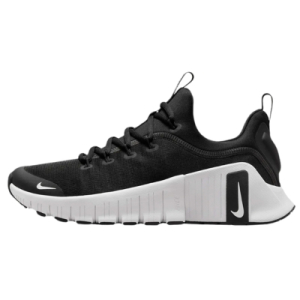
Free Metcon 6

Nike Free Metcon 5
Based on discussions on my YouTube channel, I’ve had a lot of great discourse about the Free Metcon 5 and 6 and which is better. Both models have similarities to one another along with a few stark differences.
One difference to note is the midsole density. In the gym, the Nike Free Metcon 5 has a denser feel when lifting. The midsole is a little more dense and not as soft as the Free Metcon 6’s midsole. If you want one of these primarily for strength work, then I’d keep this in mind.
Another difference to keep in mind is the upper constructions. The Free Metcon 5 has a traditional breathable which gives it a softer and less secure feel. The Free Metcon 6’s mesh and textile upper have a bit more security rigidity around the forefoot with its materials, and there are also Flywire eyelets used in the FM6.
The outsole tread patterning is also different in these shoes. The Free Metcon 5 has a lot more exposed foam around the midfoot compared to the Free Metcon 6 which can be a bigger deal for long-term durability when using these for outdoor use.
To set the record straight, both of these shoes can work for all of the types of training, but if you’re more specific with certain things, then each of these can work a little better than its peer.
| Free Metcon 6 |
Free Metcon 5 |
|
| For Lifting |
Can Work | Go FM5 |
| For Cross-Training |
Go FM6 | Can Work |
| For Short Runs |
Go FM6 | Can Work |
| For Walking |
Go FM6 | Can Work |
Construction Details
Upper
- The upper of the Free Metcon 6 is constructed from a combination of mesh and textile materials, providing breathability and flexibility.
- The forefoot to midfoot transition is clearly defined, with a synthetic overlay covering the toe box for added durability.
- There’s a light internal toe guard the wraps around the toe box and this helps boost this shoe’s forefoot security.
Boot and Tongue
- The boot and tongue areas are made from a padded mesh material, offering comfort and a secure fit.
- The boot design includes two tabs, one on the tongue and one on the heel, to assist with putting on the shoe.
- This shoe has a deep boot cup with a good amount of structure and rigidity to promote overall security from a lateral context.
- There are five core eyelets, and these eyelets are primarily composed of Nike Flywire.
Midsole
- The midsole is made from Nike’s Free technology, this model is more plush and soft compared to previous iterations.
- This midsole foam and construction contribute to the shoe’s overall comfort and responsiveness, making it suitable for various training activities.
- The forefoot of this model is more flexible and pliable while the heel is a little more dense and stable.
Outsole
- The outsole of the Free Metcon 6 is designed with a rubber tread that covers most of the shoe, ensuring grip and traction.
- There’s more rubber covering the midfoot in this model compared to the 4 and 5.
- There are some areas of exposed foam, particularly at the base of the heel and forefoot, which could affect durability in high-stress conditions.
Insole
- The shoe includes a thin, removable foam insole that adds an extra layer of comfort without compromising the shoe’s responsiveness.
- This model can be an okay pick for custom orthotics as its upper volume is spacious enough. Note though, if you have custom orthotics AND a thicker foot/higher instep, then you may find the getting on process to be annoying.
Final Remarks, Would I Buy Again?
Yes, if I wanted them exclusively for more chill training sessions and daily wear.
I would NOT buy these again with the tough that they could be great for tougher training sessions or HYROX-style workouts (the type of session that caused mine to break from sled pushes).
At the end of the day, the Free Metcon 6 is a stronger generalist compared to the 4 and 5, but it does have a few lapses with its construction for tougher training contexts. It’s good, but could be so much better if these oversights were remedied.
Again, I hope I have a one-off case regardingly my shoe’s durabiliy but based on the nature of this shoe’s materials and build, it wouldn’t surprise me if others expereince something similar.
If Not These, What Would I Get?
- If you want to stick with Nike and like a bouncy shoe, I’d go with the Nike Air Zoom TR 1.
- If you want a more runnable shoe that can work for HIIT, go PUMA PWR FRAME TR 2 or Inov8 F Fly.
- If you want a shoe that has a lifting bias but can also be run in, go with the RAD ONE.
If you have additional questions about the Free Metcon 6, drop a comment below or reach out via Instagram!


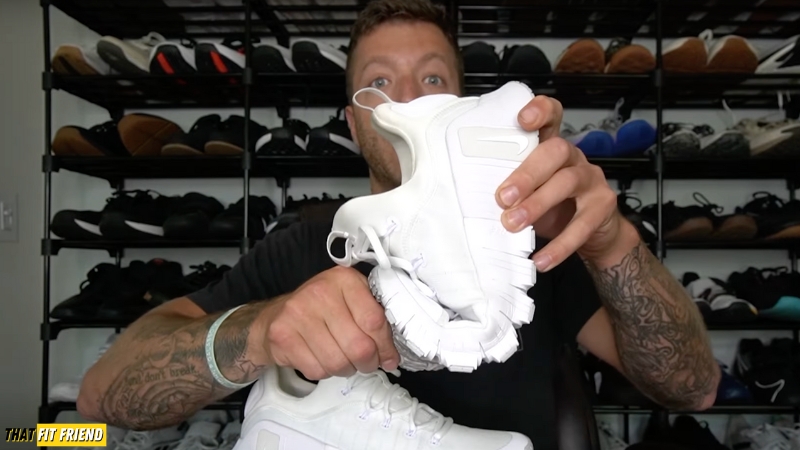


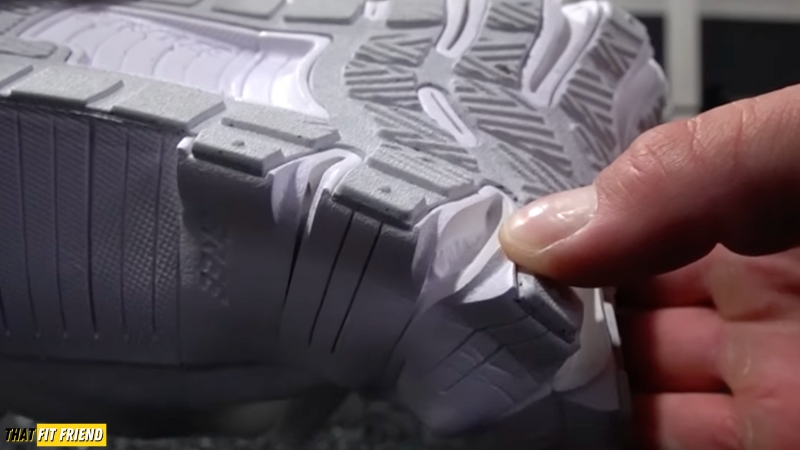

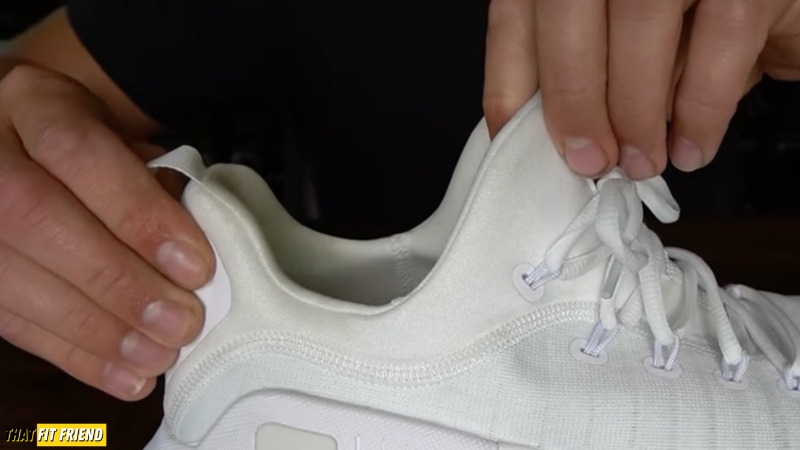



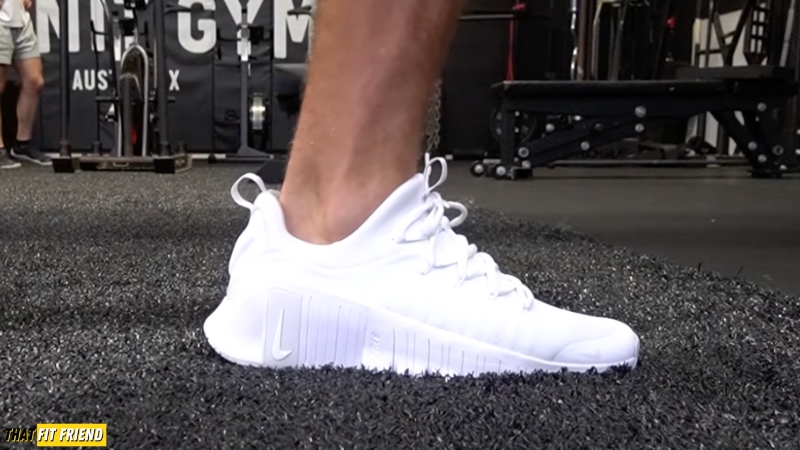
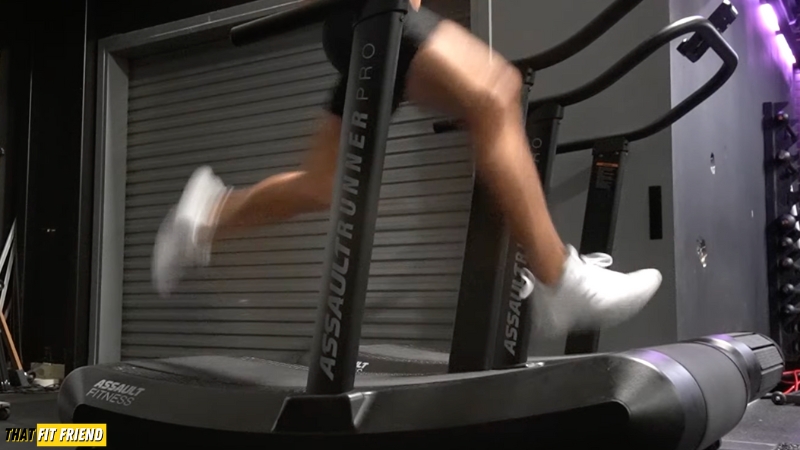


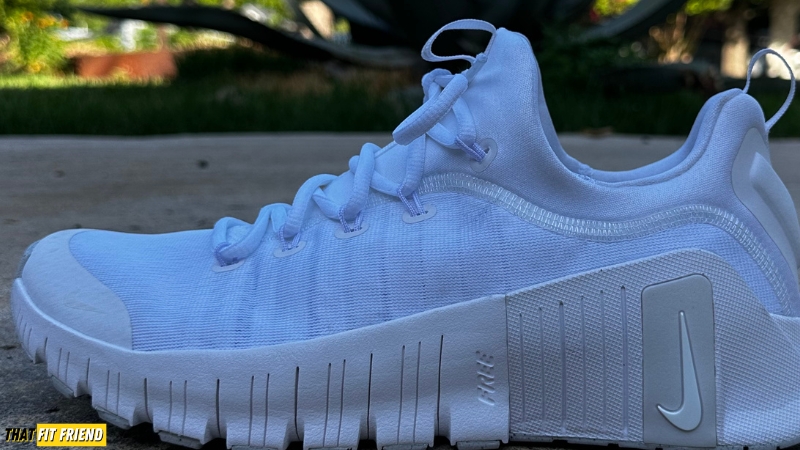
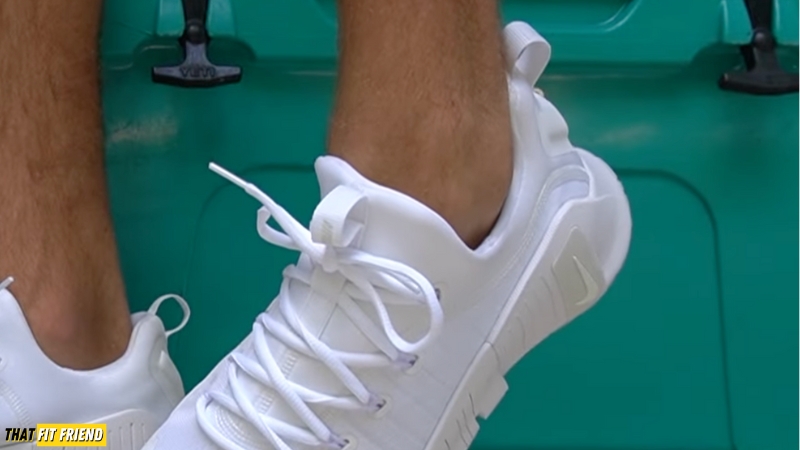
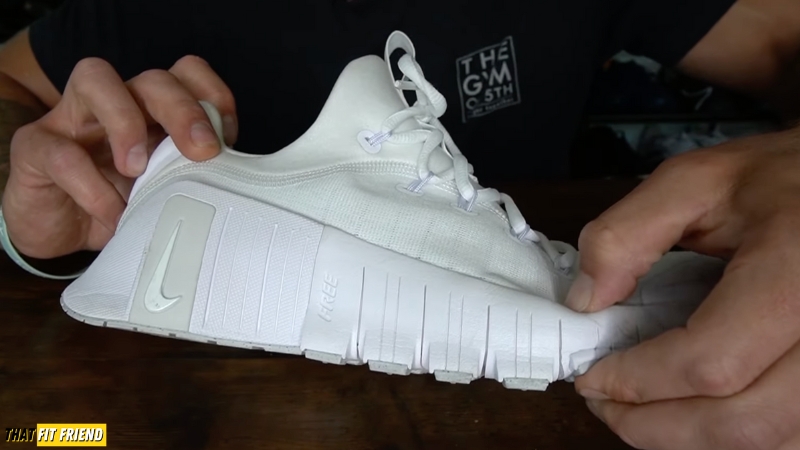
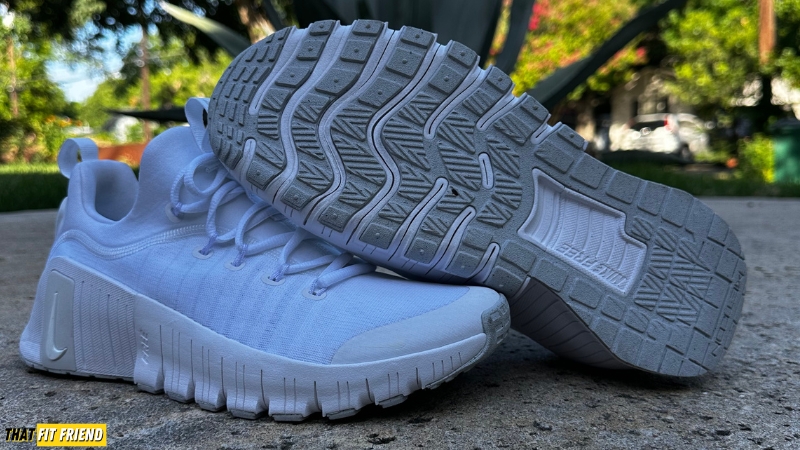
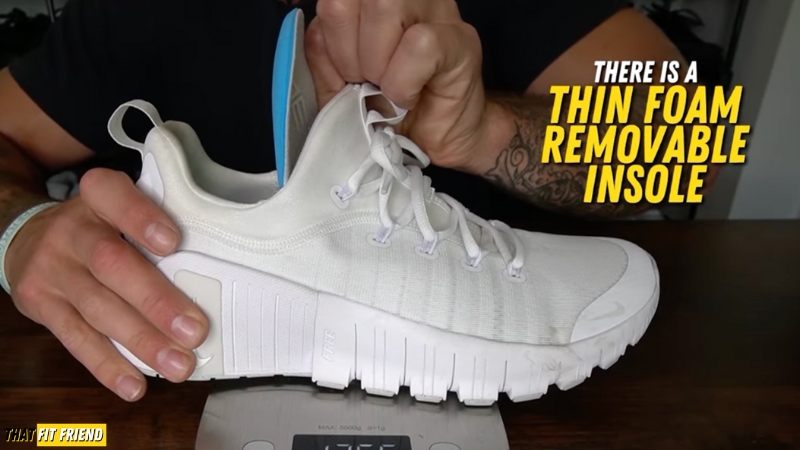




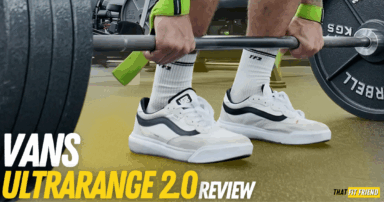
Anna
Hi Jake! I’ve been reading a lot about cross-training shoes and can’t make up my mind. I already tried Reebok Nano X5 but after my old shoes they feel a bit bulky and I experience a slight heel slip while the size smaller is too small for me. I like light shoes that feel like nothing on your foot and give enough flexibility while still protecting the foot. I don’t do any crazy stuff, I mainly go for group workouts with a combination of cardio and weight. Do you think Nike Free Metcon 6 might be the right pick? Or maybe you have some other suggestions. Thanks in advance!
Could be a solid option to try! You may also want to look into the Inov8 F-Fly if you want something super light and flexible.
Max
Was just curious how you thought these felt, or would feel, doing sprints?
They’re not bad! For a ton of sprints in workouts, though, I like a little more ground feel and less stack height. If we’re talking solid Nike shoes for that I’d look into the Flex Control models!
Ben
Jake- would you recommend the Free Metcon 6 for sled work? Looks like you had some durability issues with these for sleds though. I have a wide foot and need to prioritize stability. Welcome your thoughts! Thanks!
If it’s heavy, I would not. Anything over 3 plates is an issue with them, imo, especially if you’re doing sprint work. If you’re wanting Nike, I’d go Air Zoom TR 1 instead of the FM6 for sleds.
You could also potentially explore options like the Inov8 F-Lite. They’re wider with better grip and durability while still being responsive. Go up a half-size in those. I have some on That Fit Friend Shop and if they don’t work, I’ll cover your returns for supporting TF2!
Joseph Harrell
Jake,
How about the other 97% of us who don’t lift, don’t run, and don’t train. I just want a shoe with maximum cushioning for joint and back pain to wear as an everyday shoe.
What do you recommend?
Joe Harrell
The Free Metcon 6 is comfy for all-day wear. If you want max cushioning, though, then I’d go HOKA or something similar. I also love the Vans UltraRange NEO VR3 for daily wear, too